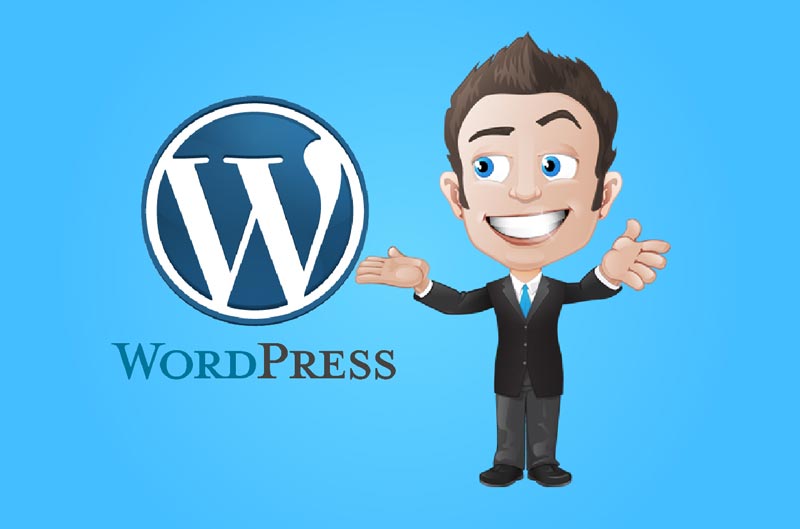Best WordPress Page Builders - (The Definitive Review 2019)
Pros, Cons & Comparison - Elementor vs. Thrive Architect Vs Beaver Builder Vs Visual Composer vs. Divi Page Builder

If you want to see the best WordPress Page Builder tools compared in one place, then you’ll LOVE this review. My team and I rigorously tested all their feature to the MAX (See how they compare). Find out which one is right for you and your business?
Advanced strategies.
Cool features.
We Compare and rate each the ‘Must Have’ features against each WordPress Page Builder so you can see the truth behind the hype.
Truth be told, I am no techie, and most certainly no website developer but just check this page out…
Yes, I personally did everything you see on this page with just one simple tool, a WordPress page builder, and you have to admit, it looks pretty great 🙂
In fact I’m addicted, the simplicity of drag ‘n drop is awesome And what is better…
The independent, unrestricted control and not having to rely on programers, designers or web developers ever again!!
(Hallelujah)
No more coding, front end designers, back end developers, web developers HTML, CSS and all that other nonsense And even better than that…
All that time and money saved!!!!!
Oh and did I mention, you’ll save load of time and money haha.
Bottom Line: Page builders have EXPLODED.
So, for my review, I put the most popular WordPress Page Builders through their paces and test them to the max. Let’s settle the debate over which is the best WordPress Page builder once and for all.
So, If you want to find the best WordPress page builder, you’ll love this guide.
Let’s dive right in…
If you know what an editor is and what it does, just skip to our reviews CLICK HERE
What is a WordPress Page Builder/Visual Composer, & why do you need one?
A WordPress Page Builder is a design tool for use on websites. As I said earlier, the purpose of this review is to find out which is the most responsive WordPress editor.
Ideally, an editor should have a friendly user interface and should be easy to use – even if you’re a non-techie! It also eliminates the necessity of learning complicated coding such as HTML. By using an additional editor, together with your content managing system (CMS), you will have the capacity to create many designs which you may not have been able to do on your current default CMS editor.
As this article focuses on WordPress editors, if WordPress is not your current CMS the plugins mentioned might not be compatible with the one you are using, so, before you continue reading, it would probably be best to check. Check Now!
So, to help you make the right choice for your website, I’m going to look at the top 5 WordPress Page Builder providers below and give my view on them.
Thrive Architect
Thrive Architect is the new Thrive Content Builder and is especially popular with serial bloggers. It’s very similar to that of Elementor.
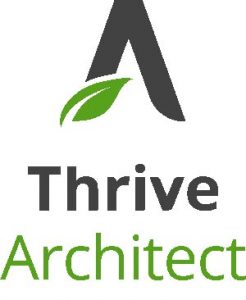
Divi
Divi claims to be a premium page builder and is commonly used with Divi theme, however you can use the page builder as a stand alone plugin with other themes .

Elementor
Elementor is one of the newbies out there in the market; having been established in 2016. That said, it’s now one of the most popluar WordPress builders out there today.

Beaver Builder
Beaver Builder has been established since 2014 and is very popular. They are always producing more new features and updates for their customers.

Visual Composer
WordPress page builder which is compatible with many themes available on ThemeForest, making it one of the most commonly used page builders around.

If you are starting out and haven’t chosen a CMS, then read our reviews on what ones we think are the best to help you make the right choice.
Now, let’s get back to Editors!
WordPress editors come as Plug-ins. The pages that are created with the editor either ‘lay’ on top of your WordPress pages or inserted into the page content boundaries in your theme. If you aren’t sure what a ‘theme’ is, visit here…
Nowadays there are myriad of choices when it comes to editors or page builders (basically the same thing). Some have been around for a long time and have benefitted from multiple upgrades to keep up with the wants and needs of their users. Others, however, are new and, through reaping the experience of the forefathers, come equipped with all elements.
Each editor cost, looks and works slightly differently. There are no defined rules, no do’s and don’ts. It’s as simple as finding one that you are comfortable with and that suits your style of working.
Saying that…
The purpose of using an editor is to allow more freedom of creativity by giving you full control over your pages without having to deal with the technical limitations…meaning you and your team should be able to use it without any problems!
You’re probably thinking…
Do I need a WordPress editor, will it make a difference, or will it be ‘another thing’ I will need to learn how to use?
The truth is …, yes, – it is another thing to learn and use, but it will make a difference! If the default editors in our CMS did everything, then there wouldn’t be a need for editors…and with the vast amount to choose from – the demand is indeed there!
Like most other CMS’, WordPress hasn’t upgraded its editor for at least ten years, which is surprising considering the costs associated with CMSs. This means that the market continues to grow and develop and makes replacing the WordPress editor even more of a to-do list top ten.
There seems to be a lot of hype around the ‘Gutenberg’ editor. Promising marvellous things from WordPress, but in my opinion, has a long way to go before it could be considered a major competitor. Don’t take my word for it though, why not take a look and make up your own mind.
What makes plug-in Page Builders different?
Well…
Standard CMS built-in editors allow you to use a drag and drop process to move things around, insert images, edit type/fonts and adjust the size of each element, which are all necessary ‘must haves’ to get started.
Plug-in editors give you much more freedom!
You get total control of your page and its layouts. This is usually done by a column/grid layout which you can add and amend to, for your preference.
FYI– It is best to keep the layout as it is for the benefit of those using mobile phones and tablets. These days your site needs to be 100% responsive and viewable on all devices. Not only does this make the usability available to all, but it also helps your ranking in Google (that smart robot that seems to run the web!). Building a site that is not mobile responsive would be a huge mistake.

Now, let’s get back to it…
With plug-in editors, your creativity can let loose! You can develop columns and grids into beautiful responsive designs. You can add all kinds of elements such as content and icon boxes, tables and animations, etc.
So, what exactly are the key differences between the default editor and WordPress editor plug-in?
I know I’ve been emphasising how great WordPress editors are and why they are necessary, but like all things, they don’t always live up to their high expectations. Whichever choice you make, there will still be good and bad points to consider.
To make things simpler, let’s have a look at the pros and cons of both your default CMS editor together with a WordPress editor plugin…
Your default CMS Editor
Pros
- It works from the word go - no waiting for plugins to get started
- It is simple to use and visually in line with your CMS
- If you’re using it for simple text, it reacts with lightning speed
- 99% of the time there’s no glitches or bugs
Cons
- There are creative limitations which could mean that your end product won’t look ‘pretty.’
- Without a general knowledge of coding and CSS, changing the style of your page is near impossible.
WordPress Editor plug-in
Pros
- You can get the results you want without having to know coding!
- You can see your changes as you do them (visual editors)
- It’s easy to use – drag and drop = simple
- You can create templates from your designs and keep branding consistent
- If you don’t want to design your templates, you can use the predesigned ones.
Cons
- Set up is required by a third party
- Due to the complexity of the code (that works behind the scenes) bugs are more likely
- A vast majority of page editors do not work with historical content
- - If you are copying content, a simple copy and paste may not work – you will need to reformat
So, which is the best?
Everyone has their own opinion, I wouldn’t be writing this if I didn’t think editors were worth it, nor if I thought choosing an editor was a simple decision to make.
If you already think editors aren’t for you then thank you for reading so far. If you are still unsure or curious about them and what they can do, then keep reading! Alternatively, if your eyes are going fuzzy and your head is hurting, we can always have a quick call, weigh up the options and see which is the most suitable for you…

For those of you who are still with me…
Generally, in my opinion, a page editor will make all the difference to your website, your visitors, your engagement and most importantly your sales and acquisition!
I say ‘generally’ because sometimes images, flashes, and colour when used together can result in overkill.
The best thing about plug-ins is that you don’t have to use them! You can still always use your default editor – it just gives you options.
In WordPress each time you want to create a new post/page the CRM gives you the option to choose which editor to use – the default or the plug-in. It’s at this point when you will need to decide which way to go. If your page is a simple text-based style, you can go to the default editor. If you want to make it more creative and engaging, then the plug-in will give you added design freedom.
I have outlined the differences and abilities of WordPress Editors, so hopefully, you will have a better understanding than you did before.
Now, let’s take a look at the different types.
Yes, that’s right different types! There are two main types of editor, one that works in the back end of your CMS and requires you to update and refresh to be able to view changes (similar to the default editor). These editors are very ‘block format’ based, which is necessary for responsiveness reasons but can limit creativity. The second is a front-end editor; this allows you to make changes on the page and view them immediately (real time) offering more variety in design and styles.
The top five WordPress editors I am going to review are of the second type, so keep reading to see how they fared.
Thrive Architect
Thrive Architect – Previously known as Thrive Content builder. Thrive Architect is a front-end WordPress page editor plugin. It is a product of Thrive Themes and can be used with tools or on its own

Beaver Builder
Beaver Builder – This WordPress Editor has been around for some time and is tailored towards Web developer professionals.

Elementor
Elementor is one of the newer WordPress Editors on the market. It is still gaining popularity through simple design and by offering a free version.

Divi
Divi Builder is a product of Elegant Themes. Initially, it was just a back-end editor but has now been modified to a front-end editor and is growing in popularity.

Visual Composer
Visual Composer is one of the longest standing Editors showing no signs of disappearing and offering a full front end editing solution.

#1 WordPress Editors' 'Must Haves'
What are the most important ‘must haves’?
When it comes down to choosing the best WordPress editor, you may think there isn’t much to consider. They all do the same thing, right? Well, sort of. The completed result will always be a shiny new webpage…but the most significant difference is the processes that lead to it – ‘the journey.’
I am going to review our top five editors and see how they rank in terms of ‘must haves.’
#1. Usability
The number one thing to consider is obvious. Is the editor ease to use? If not, why buy it! Everyone uses their PC/laptops differently, everyone thinks differently, and everyone has their preferences.
Let’s face it, you don’t want to spend hours and hours learning yet another software application!
The first clear difference in usability is between Elementor and Visual Composer. From these two images, you can see straight away how different the interfaces are when adding elements to your page…
Visual Composer

Elementor

The elements page on Visual Composer is not visually appealing. There is too much on display which leaves it cluttered. The sidebar displayed in Elementor is more straightforward to use and much easier on the eye! Having the bar present throughout the whole time that you’re building your page is excellent as it means that you don’t have to click on everything to find what you’re looking for.
Being able to find what you want is very important – something that unfortunately isn’t made easy by Visual Composer. Most Page builders allow you to view the icons and menus while adding elements, whereas Visual Composer requires you to search for them!!
So, overall, how did they stack up?
Thrive Architect
This has a similar interface to Elementor which is nice and clean, and very easy to navigate. A well deserved 4 stars

Beaver Builder
This is a simple design, but it’s rather annoying that you have to keep clicking the sidebar to display the options on the page. Hmmm, 3 stars.

Elementor
As mentioned before, it is easy to use and understand, although you may need to look harder than Thrive Architect to find the things you need. Nice work Elementor, 4 stars.

Divi
The floating window combined with the constant scrolling makes it uncomfortable and frustrating to use. Could do better Divi so only 3 stars.

Visual Composer
This is too busy for me, and I found it confusing and difficult to use. Very disappointing Visual Composer, so only 2 stars.

#2. Module Library
The module library has a comprehensive collection of elements which you can utilize when building your page.
Included are things such as images, buttons and blocks of text. Together with some more advanced features such as sliders, accordions and pricing tables.
So let’s see how our 5 WordPress editors stacked up.
Thrive Architect
If you were expecting a whole library of brand new elements, then I am afraid that you’ll be in for a disappointment, as there aren’t any. What in fact has happened is that a few of those pre-styled elements have left us such as pricing tables and guarantee. It’s a shame, but what can you do? Only 3 stars.
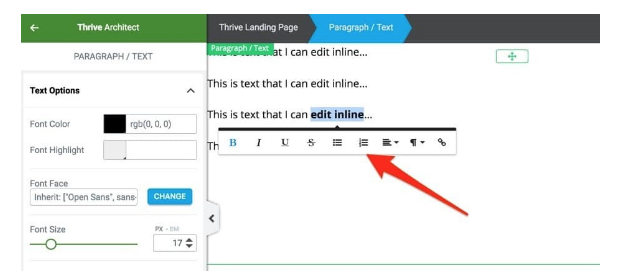
Beaver Builder
Beaver Builder covers most of the basics, as well as having some conversion elements such as the subscribe form, a countdown timer, and a testimonial slider. However, it doesn’t progress much beyond that. Not bad though, 3 stars.

Elementor
Elementor offers a vast library of elements with loads of choices. It is worth remembering though, that some of them are exclusive to the PRO members, however, even as a free user there is still a huge selection. Good job Elementor, 4 stars.

Divi
Divi has a robust library consisting of 46 content modules that you can use efficiently to build your page. The window is a little small for my liking, which meant that I was using their search bar nearly all the time, which I didn’t have to do when using the other editors. Not too shabby Divi, 3 stars.

Visual Composer
Visual Composer does come with many element options for you to choose from. The choice may look vast, however, many on offer seem null and void, and there appear to be multiple elements doing the job of one. Need to improve, 2 stars Visual Composer.

#3. Flexibility
It’s a tough one when you are trying to get the correct balance of flexibility and abstraction. Flexibility and capability refer to the toolkit you’re working with. Why have an Editor if you can’t build exactly what you visualize? To construct a limitless page, the complexity of the software is likely to be compromised.
In this section, we’ll discover just how flexible each WordPress editor is to ensure you choose the right tool for you.
See what happened when I tried to create a replica of our websites homepage in each Editor…
Thrive Architect
This was easy as this is the Editor I use, so of course, everything was straightforward (probably not a fair comparison!!) A deserving 4 stars none the less.

Beaver Builder
Some elements are more difficult to style than others. It didn’t make any sense to apply different options to each component. I really struggled, so only 2 stars.

Elementor
Again Elementor is good at this, with hardly any limitations or restrictions on design. This definitely gets a big thumbs up and bar far my favourite so a maximum 5 stars.

Divi
It did everything that I wanted although it did take me longer than some of the others, so could only award Divi 3 stars.

Visual Composer
With such a vast list of elements and templates you’d be mistaken in thinking it had everything. Looks can be deceiving though, and it didn’t come anywhere close to what I was expecting. A disappointing 2 stars.

#4. Page Templates and content
Page templates are used to display your site’s dynamic content via a page, e.g., posts, calendar events, news updates, media files, etc. You may choose to design your homepage to look a specific way, sometimes quite different to other parts of your site. Or, you may choose to display a featured image that then links to a post which is on one part of the page, or have a list of latest posts somewhere else, and uses a custom navigation. Page templates can be used to achieve these things and more. So, let’s have a look at how our top 5 performed…
So let’s delve in…
Thrive Architect
Thrive offers a good selection of content templates, which allow you to save each section of your content so that you can reuse it at a later date. In the past, this was a big bug bearer of mine when using Thrive, which thankfully has now been corrected. Excellent Thrive, 3 stars

Beaver Builder
If you depend a lot on templates, then Beaver Builder offers you a reasonable amount of selection in content structures and landing pages to hopefully meet your needs. Not bad Beaver Builder, 3 stars.

Elementor
Elementor’s selection was by no means terrible, but I would think that a lot of people would agree that it is nowhere near complete. Especially when looking at what other editors have to offer. Room for improvement Elementor, 3 stars.

Divi
If you are a template fanatic, you will probably feel quite frustrated using Divi’s pre-designed template options that are straight from the box. Not impressed Divi, 2 stars.

Visual Composter
Visual Composer offers a wide variety of WordPress templates to suite any project that you may be doing. Why not visit the Visual Composer Hub, which is the free market place for brilliant WordPress templates? Good show Visual Composer, 3 stars.

#5 Speed
So, we all know what we are trying to do, and we want to get it done as quickly as possible, sound familiar? We’ve got the tools, but have we got the speed?
In this section, we’ll find out how long it takes to achieve what we set out to do. So far, we’ve looked at usability and capabilities, now let’s look at production speed and load times. Making multiple changes to a page that takes forever to register isn’t going to be useful and will end up being a hugely frustrating waste of time!
And you don’t want that!
So let’s delve in.
Thrive Architect
It’s fast, very fast. Everything that was added or amended was instantly registered which made the whole process super easy and efficient. Thrive were one of the first on the market when releasing their WordPress editor, with an ever increasing customer base. A deservedly 5 stars.

Beaver Builder
This isn’t very fast. Every amendment or edit takes a few seconds to register. A few seconds doesn’t sound like much but when you have lots of changes to make it does become very annoying. Seriously needs to speed up, 3 stars.

Elementor
Every so often, Elementor had a slight delay in loading. However, the overall speed of the editor was good! Good try Elementor, 4 stars.

Divi
Is excellent when it comes to speed. Initially, the load time does take a few minutes, but from then onwards it was smooth sailing. Impressed, 4 stars.

Visual Composer
This was the most frustrating of them all. The amount of time that it took to register the smallest change was not acceptable. The time to achieve even the most minor changes was shocking! No comment, 1 star.

#6. Support
Things DO go wrong, and sometimes we don’t know how to fix them. Customer service is essential in every market, be it product or service. Customer support is even more critical if you have a problem with your website, as it needs to be sorted quickly and efficiently. Otherwise, it may cost you!
So, with this in mind, we will gauge our top 5 WordPress Editors– for their speed of service and accuracy of the fix!
Thrive Architect
Historically, Thrive, hasn’t been the best when it comes to customer support, but with the release of Thrive Architect, we have seen improvements so want to award them 4 stars.

Beaver Builder
With Beaver Builder, you must raise a ‘ticket.’ This being a common support process for many service providers it doesn’t always seem like the most efficient. It was, however, pretty responsive and most queries get addressed quickly. Well done, 3 stars.

Elementor
As well as offering multiple ‘how to’ documents, Elementor also has a large community on Facebook that is a fantastic source to go to if you’re stuck! So much choice. Excellent! 5 stars.

Divi
The support provided by Divi is slightly different from the others I have come across. They have a library of information in their forum which is not only from their support team but also from their customers. Different, but good, 3 stars.

Visual Composer
The response time with the Visual Composer is less than desirable. It can take a good couple of hours to receive a response from a query, which isn’t great when you need to make updates on a live website! Could do much better, 2 stars.

The needs and wants of a WordPress Editor
In a world that is ruled by tech and with such a vast market, it is essential to have a reliable, up-to-date Editor that provides you with the tools you need and trust.
Of course, this can be more difficult to rate, there are, however, a few things to look for;
- Look at their history: How long have they been going? Are they a stand-alone business?;
- What is their customer base and growth?: How big is their customer base? What percentage of the market share do they have? Is their popularity increasing or declining?;
- Credibility: Do they have a secure website? Are their claims realistic? Are they on social media channels? Do they have a public voice?
- Customer reviews: What do their customers really say about them?
If the answers to the above points are positive, then chances are you’ve chosen a good one to work with.
It’s important to choose an Editor that you like and want to work with. It’s not a short-term investment and is something that requires time and consideration.
It is also vital that you chose an Editor you are compatible with and want to continue using. It isn’t something you can change your mind on every week or month etc. Or if you do, it’s a whole lot of work every time!
You’re probably thinking, why would that be?
Every page you build with that editor has a unique code that relates to that editor and only that editor. This means that if you decide to change the editor, you will need to re-build your pages from scratch– making it vital to make the right choice, to begin with.
So, how are they measuring up so far?
Thrive Architect
One of the first on the market with an ever-growing customer base! 5 stars.
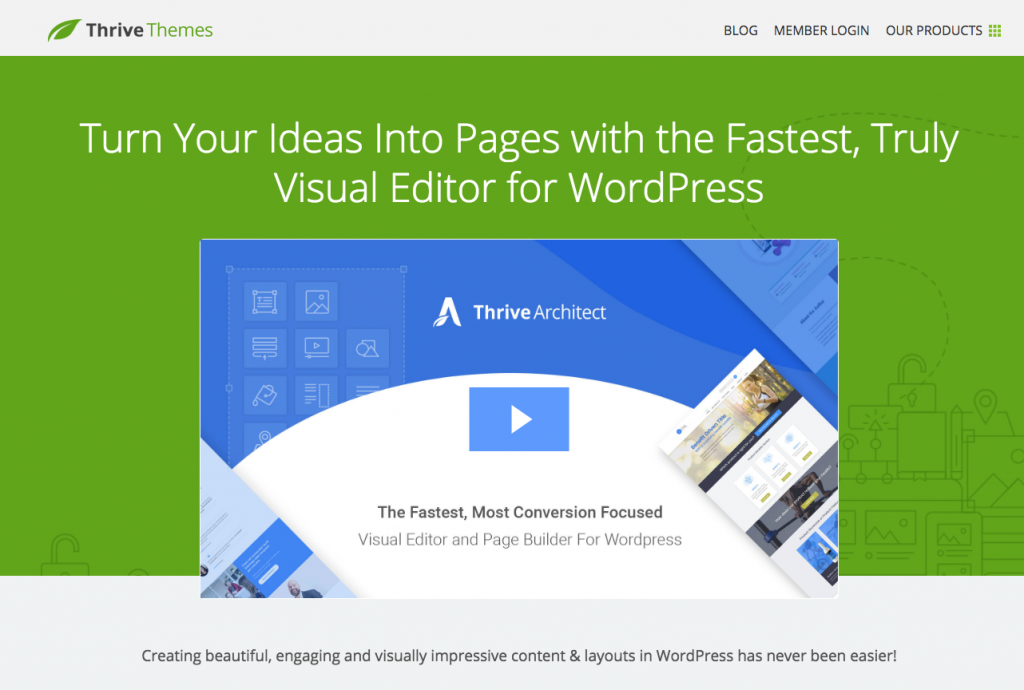
Beaver Builder
It has grown a committed customer base in the few years it has been running and seems to be secure in the marketplace with a strong presence within the developer’s community. 4 stars.

Elementor
Being the newest editor that we are reviewing, it is harder to judge. I’d advise waiting a little bit longer before jumping into this one. However, their customer base is growing, and the reviews are quite good! So 4 stars.

Divi
This is backed by the ever-reliable Elegant theme and has developed tremendously since it first began. I do believe though, that this one is sticking around for the long-haul. A well earned 5 stars.

Visual Composer
Is one of the longest going and has a very loyal customer base. I don’t see Visual Composer leaving us anytime soon! A good 5 stars.

So, how do they all compare?
We’ve given each a rating out of 5 for the above mentioned ‘must haves,’ and ranked them in the table below.
You may, however, still be unsure which way to go…
Let’s look at a major factor that must be taken into consideration…
Price!!
Depending on the size and scope of your business this could be the decider for you!

The Best ‘Value' WordPress Editor
Now, let’s have a look at who ranked as the ‘best value’ WordPress Editor…

If you are starting up and money is tight, or even if you’re well established and looking to save on your budget, having an Editor does not have to break the bank!
You can see from the price comparison that there is one WP Editor that stands out in this area and that’s Elementor. Their free version without too many limitations is a comprehensive page builder making it excellent value.
This is the one we use at Entrepreneurs Gateway and gets my top vote for the ‘Best Value’ WordPress Editor.
The EntrepreneursGateway.com Best WordPress Editor Award Goes To...
Who is the...
WINNER ?
Find out who our winner is for the best Email Marketing Software tool.

Our 2nd choice WordPress Editor
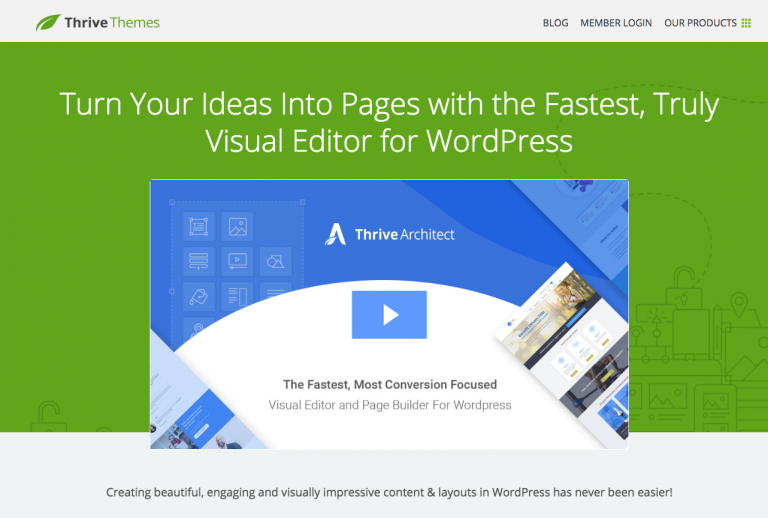
We have established that Elementor is more than up to the job for a page builder and is reasonably priced (free initially). But having said that; the Editor does fall short when it comes to the Marketing side of things.
And we all know the main reason we build a website is for the monetary gain it will drive into a business.
If Thrive Architect did not exist, I might have even given Elementor this title as well…
But it does exist, and gets my top vote for the best Premium WordPress Editor.
WordPress Editors - Short Reviews
Thrive Architect
Can this latest version from Thrive surpass expectations following on from Thrive Content Builder?
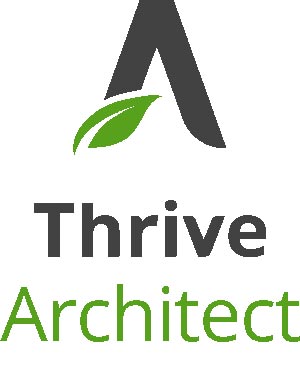

Effectiveness
As you would expect, Thrive Architect has the full ability to recreate practically any design and works seamlessly alongside other current Thrive products.
Cost
There isn’t a free option but, it is on the cheaper side of the editor’s price list, compared with other on the current market.
Usability
Overall, it is an intuitive builder, however, in places, it needs some minor interface tweaks.
Support
Thrive isn’t renowned for offering the best support, but has promised this will change in the future
Pros
- Excellent user interface
- Much improved elements selection
- Far better HTML and CSS editors
- Hotkeys for quicker actions
- Flexible layout options
- Vastly improved element editing options
- Backward compatible
- Inline text editing and formatting
- New response view and device-specific styling
- Improved management of content templates
Cons
- Crowded display in the properties panel
- Unable to save or use global content templates
- No new page templates
- No recent elements have been added
- Elements are not enabled to drag and drop
- Still has bugs which need fixing
Divi Builder 3.0
Divi Builder 3.0 is promoted as having had a complete overhaul. Our review will prove if this is indeed true! I will be looking at what is both good and bad to see whether Divi 3.0 can indeed wear the crown of the new generation of page builders.


Effectiveness
Divi works well until you challenge it with more advanced customizations and layouts.
Cost
Taking into account that you get all the Elegant Themes and plugins included in the page builder, it still comes out at the somewhat pricey end.
Usability
Divi’s minimal interface did take out most of the guesswork when you got down to using this page builder.
Support
Numerous support channels can be easily found, including a few active community groups on Facebook.
Pros
- Minimal, clean interface
- Massive module library which includes dynamic modules
- Global modules and templates having selective sync
- Solid design along with customization settings
- It’s very fast.
- Exceptional support channels are available
Cons
- Several bugs, especially when creating the more complicated layouts
- Columns were challenging to work with
- Poor template choice
- The Live support is only available for pre-sales
Elementor
Elementor is the newest Editor to join the scene. Even with all the other competition, it is coming along in leaps and bounds and rapidly gaining customer growth.


At Entrepreneurs Gateway, the WordPress editor we chose to use is Elementor. We are smitten with it and have found it to be far superior to the alternative editing software available.
Effectiveness
Should you need to recreate an existing page or create one from your imagination, then you won’t be disappointed as there isn’t much that Elementor can’t handle.
Cost
Is probably the best value for money as it is free and the tool is virtually a complete product in itself. A PRO version is available but isn’t necessarily for everyone.
Usability
As with most things, it will take some getting used to, but you will find there is plenty of useful information that will guide you through that initial learning stage.
Support
Despite more of a hands-off, than hands-on attitude from Elementor, the detailed documentation together with the community support groups are top notch.
Pros
- Excellent user interface
- Outstanding Global widgets
- Revision history works well
- It is open source
- Has an active Facebook group
- Has super detailed documentation
- Has hidden elements and Unique styling for responsive
- The core product is 100% free
Cons
- Default forces styling
- Unable to directly edit elements
- Several marketing-oriented features are missing
- There is no undo button
- The global vs. static templates are confusing
Beaver Builder
Beaver builder is currently one of the most popular page builders.
It is a favourite with both developers and designers.
In this review, I’ll cover all aspects of the page builder to find out if it merits its status.

Effectiveness
Beaver Builder is practical and covers all the basics, but if you attempt anything too technical, you’ll quickly find yourself up against a roadblock.
Cost
Not the cheapest page builder, but the lowest level plan is still reasonably priced considering you can use it on an unlimited number of sites.
Usability
Overall, this builder is user-friendly, but that’s mainly because of its limited capabilities.
Support
Several support options are available which are reasonably reliable, including an active Facebook community group with 6,000+ users.
Pros
- Intuitive user interface (beginner friendly)
- Decent library of page templates
- Ability to save templates and content sections to reuse later
- Several reliable support options available
- Use on unlimited sites (even on the cheapest plan)
- Saves modules and rows to reuse globally
- Great support channels available
Cons
- Limited module library and customization
- Limited overall design flexibility
- Constant loading with every action
Visual Composer
Visual Composer was one of the very first WordPress Editors.
In this review, we will check out if being a ‘Goldie Oldie’ is more advantageous than being a ‘new kid on the block.

Effectiveness
For basic layouts, it rocks. However, more complicated designs are not so easy to achieve.
Cost
If you only need one licence, Visual Composer is excellent on price; if you need more than this, the cost soon adds up to an excessive amount.
Usability
If you like clicking, then you’ll love it. However, I think it could be more straightforward.
Support
Before purchase, there is none available, and after purchasing, the support is pretty average.
Pros
- Clear, modern interface
- Specific pre-sets and templates can be saved
- 200+ premium add-ons to choose from
- A reasonable price, for one person on one site
Cons
- Over complicated design
- Inability to undo
- Too many useless elements in the library
- Little options for customization
- Lack of flexibility with layouts and column options
- Very few page templates
- No ability to edit in real-time
- Lack of customer support before purchase
- Too expensive if you require more than one user or site
What’s your number 1 take away or maybe you’ve got a question.
Have you been party to the Best 5 WordPress Editors we have reviewed , and if so, what can you share with us?
Either way, I would love to hear from you, and will be personally responding to all comments
If you like this article don’t forget to subscribe and let us help you grow your business.

